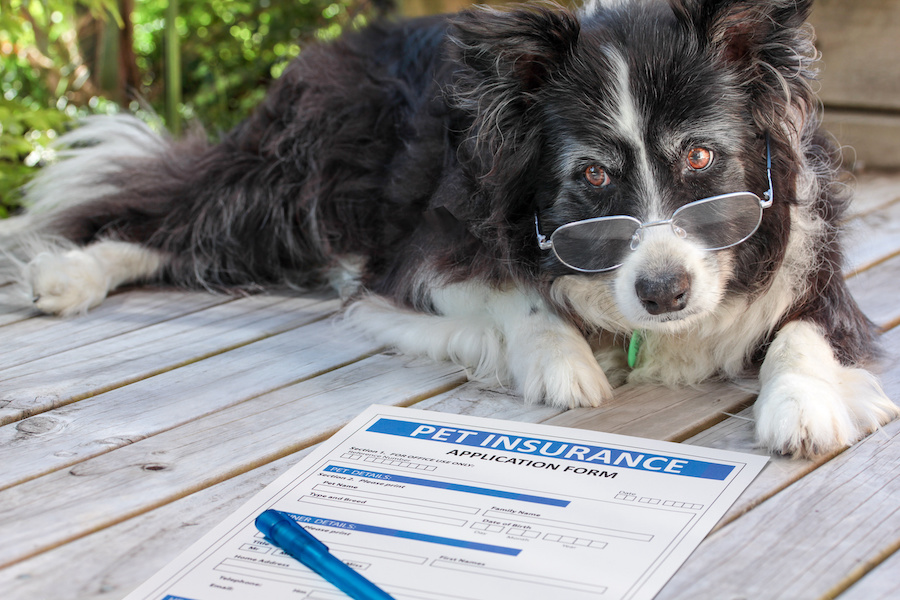
While your cat may be more self-sufficient than you these days, it doesn’t mean he is immune to accidents or health concerns. However, providing the best care for your cat from kitten to senior can help solidify your relationship for years to come.
The best pet insurance can help you prepare financially for unexpected expenses regarding your furry friend. Affordable plans are available to give you peace of mind without worrying about keeping up with monthly costs. In addition, customizable add-ons can cover everything from a spay/neuter procedure to essential teeth cleaning.
However, not all cat insurance policies are created equal, so it is wise to compare plans from multiple insurance companies to know what’s covered (and what’s not!). Check out our in-depth guide to cat insurance so you can spend more quality time with your furry friend.
What Is Cat Insurance?
Cat insurance provides you with financial assistance if your cat gets sick or injured.
With cat insurance, you can rest assured that you will be able to afford to get your pet the proper care from a respected vet in your area.
There are three common age groups of cat insurance: kittens, adult cats, and senior cats. Kittens can be insured starting at six weeks, and senior cats up to their 15th birthday (cats living longer than 15 may have an accident-only option available).
How Does Cat Insurance Work?
Cat insurance involves a monthly premium paid to the insurer to provide coverage for your pet.
Your chosen policy offers covered conditions and expenses. The policy also outlines reimbursement rates, deductibles, and a maximum payout.
Tip: Cat insurance is less complicated than our medical insurance stipulations. Generally, cat insurance companies will reimburse you directly, so you don’t have to search for an “in-network” vet before a surgery or procedure. You are free to choose your favorite vet, a vet specializing in your pet’s condition, or a vet closest to your location.
Do I Need Cat Insurance?
Most cat owners treat their furry friends as a member of the family. As with family medical insurance, you will have to decide if cat insurance is affordable enough for your family. Keep in mind cat insurance reduces your financial risk when an unexpected illness or injury occurs.
Most cat owners choose insurance to provide the best quality care for their cats. In addition, with the rising cost of veterinary care, cat insurance can provide peace of mind from kitten to adulthood.
When Is the Best Time to Buy Cat Insurance?
Veterinarians suggest enrolling in cat insurance as soon as possible. Most cat owners will start insuring their pets within six months after their adoption day.
Cat insurance does not cover pre-existing conditions, so it’s best to start coverage while your cat is healthy and free of any health issues that could nullify your claim.
What Does Cat Insurance Cover?
Cat insurance covers most costs that arise from accidents and illness. The following issues are generally able to be covered:
- Allergies
- Specialist fees
- Cancer treatments
- Diagnostic testing (x-rays, blood tests, MRIs, etc.)
- ER
- Surgery (ligament tears, cataracts, etc.)
- Hospital costs
- Treatments
- Rehabilitation
- Dental
- Prescribed medications
- Unexpected injuries/accidents (broken bones, ingesting a foreign object, etc.)
What Does Cat Insurance Not Cover?
Cat insurance does not cover pre-existing conditions (deemed by a veterinarian or through medical records) and routine care costs.
Other plan exclusions may include but are not limited to: spay/neuter, vaccines, dental disease, hereditary conditions, behavior-related issues, hip dysplasia, and grooming.
Tip: Some pet insurance companies, such as Embrace pet insurance, will cover pre-existing conditions if you can prove that your cat has shown no signs or symptoms for at least one year after diagnosis.
How Much Does Cat Insurance Cost?
Coverage can cost as little as $10 a month and can increase depending on the age, sex, size, breed, location, deductible, and extent of policy coverage.
Comprehensive coverage costs $15-$30 per month on average.
Optional add-ons include a wellness package. A wellness package covers routine exams, vaccines, spay/neuter, blood work, fecal exams, teeth cleaning, flea, tick, and heartworm prevention.
When Can Coverage Start?
After purchasing a policy, the insurance company determines when your coverage will start. For example, a cat insurance policy takes approximately 14 days.
You are not allowed to submit a claim for reimbursement until after the stated waiting period has passed.
If a health issue arises before the waiting period, your policy may consider “pre-existing” and not cover the condition.
Will My Cat Be Covered for Life?
Your cat is covered once you start a cat insurance policy until you stop making monthly or yearly payments. If your cat lives past a certain age, your policy coverage may reduce.
After enrollment, you are liable for all monthly payments to keep the insurance policy active. Contact the insurance company directly if you need to cancel the policy.
Your insurance company also has the right to end or freeze coverage for any reason they see fit. However, reputable companies will provide you with their terms and conditions upfront, including an initial trial period to see if the plan is right for you. Some companies will even offer a money-back guarantee.
FAQs
How do I get reimbursed from my pet insurance company?
If your policy provides a reimbursement, you will need to pay the vet bill directly after services are complete.
Then submit a claim to your insurance company that includes requested information such as a breakdown of costs, medical history, etc.
Your pet insurance company should generally promptly reimburse you 70% to 100% of the cost (minus any agreed-upon deductible).
How long does it take to get reimbursed by my pet insurance company?
Typically, after you submit a claim, you will receive a reimbursement within a week to 10 days. If you are unsure about your cat or dog insurance company’s reimbursement timeline, ask for a time estimate before signing up for the policy.
Can my cat insurance provider pay the vet directly?
Yes, you can be pre-approved for a procedure that pays the vet directly. An insurance company that can compensate the vet at service can alleviate upfront financial burdens. All pet insurance companies offer this feature.
How do I save money when buying cat insurance?
Enrolling your cat in coverage when he is still young will help lower your premiums. You can also choose a high deductible to decrease payments but weigh the pros and cons before deciding if a high deductible/low payment or higher/lower deductible is right. The same goes for a lower reimbursement rate or lower coverage limit.
There may also be discounts for paying annually instead of monthly and if you insure multiple pets under the same insurance company.
Can pet insurance be backdated?
The insurer will not cover any claims submitted before your official enrollment date. Check your policy paperwork for specific terms.
However, most companies can backdate premiums if your cat or dog passes away while on pet insurance, so you are not paying for insurance you can’t use.
How do I fight my pet insurance claim denial?
Call your pet insurance company directly to ask for a review of your claim. You can also ask if the insurance company needs supporting documentation to help the claim get approved.
If further documentation is needed, provide it promptly. You will need to involve the insurance company directly before using other means to receive reimbursement.
Click here to compare pricing and plans from all major pet insurance companies



